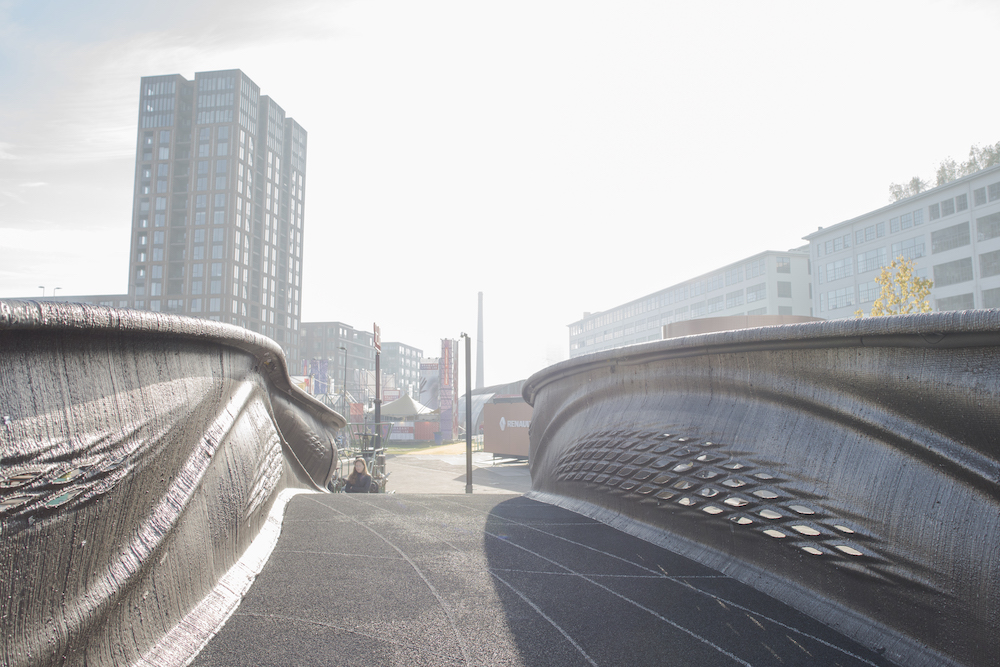
MX3D has been working for a number of years on a metal printing technology specifically for bridges and large metal items. Incorporating machine learning and AI into the build process the company uses robot arms to layer by layer deposit metal. The company is using off the shelf robots and welding technology in combination and they can deposit over one Kilogram per hour per robot arm. By using six axis robots they tout their degrees of freedom they will have with these robots but they could potentially not be accurate (stiff as well as positioning accuracy) enough to give really stellar results.
What is very interesting is that they say that their printers are significantly cheaper and that they also use steels that are $5 per kilo. Started by Joris Laarman and supported by Autodesk MX3D is a very interesting technology for large outdoor objects. I really like it as a technology for printing rebar like structures for reinforced concrete and think that this is a great application for it. In addition to Autodesk, the company also works with Lenovo, Arcelor Mittal, ABB, Air Liquide and Arup the engineering company that makes starchitect’s dreams come true. Especially that partnership and the one with ABB who are giants in robot arms and other industrial automation give MX3D a real leg up on the competition. Dutch Design Week is one of the largest design events in the world, taking place every year in Eindhoven it has over 300,000 visitors attending the hundreds of design events and showcases each year.
MX3D today has showcased its bridge on the Ketelhuisplein in Eindhoven so people can see the future of construction up close. It is not huge but it is very impressive. Competition in house and outdoor printing will be heating up over the next few years. Many more players want large-scale objects that are not viable with current industries. Especially in shipbuilding, industry, construction and oil and gas, this is a wish. Few 3D printing technologies are designed to be economical as well and this will greatly increase application areas for this technology. For large scale printing, the most players either seem to be focussed on polymers, metal welding or concrete.
The problem with the polymers is shrinkage, lack of control, rough and ugly objects and reinforcement. Essentially they’re using off the shelf materials to try to make outdoor structures which is silly. Instead they need to make materials specifically for outdoor 3D printing applications. In that way, they can insulate, build faster and build more functional objects. In welding process control is a real problem and objects are barely held together cheez whiz metal kinds of things.
Better closed loop type things and advances in machine vision and controlled cooling need to happen here. In concrete 3D printing, there are more liars than actual practitioners and we will need to lose the tricksters for that market to advance. Apart from that lack of good layer adhesion is an issue here. If this is the year of metal printing can 2020 be the year of large-scale printing?